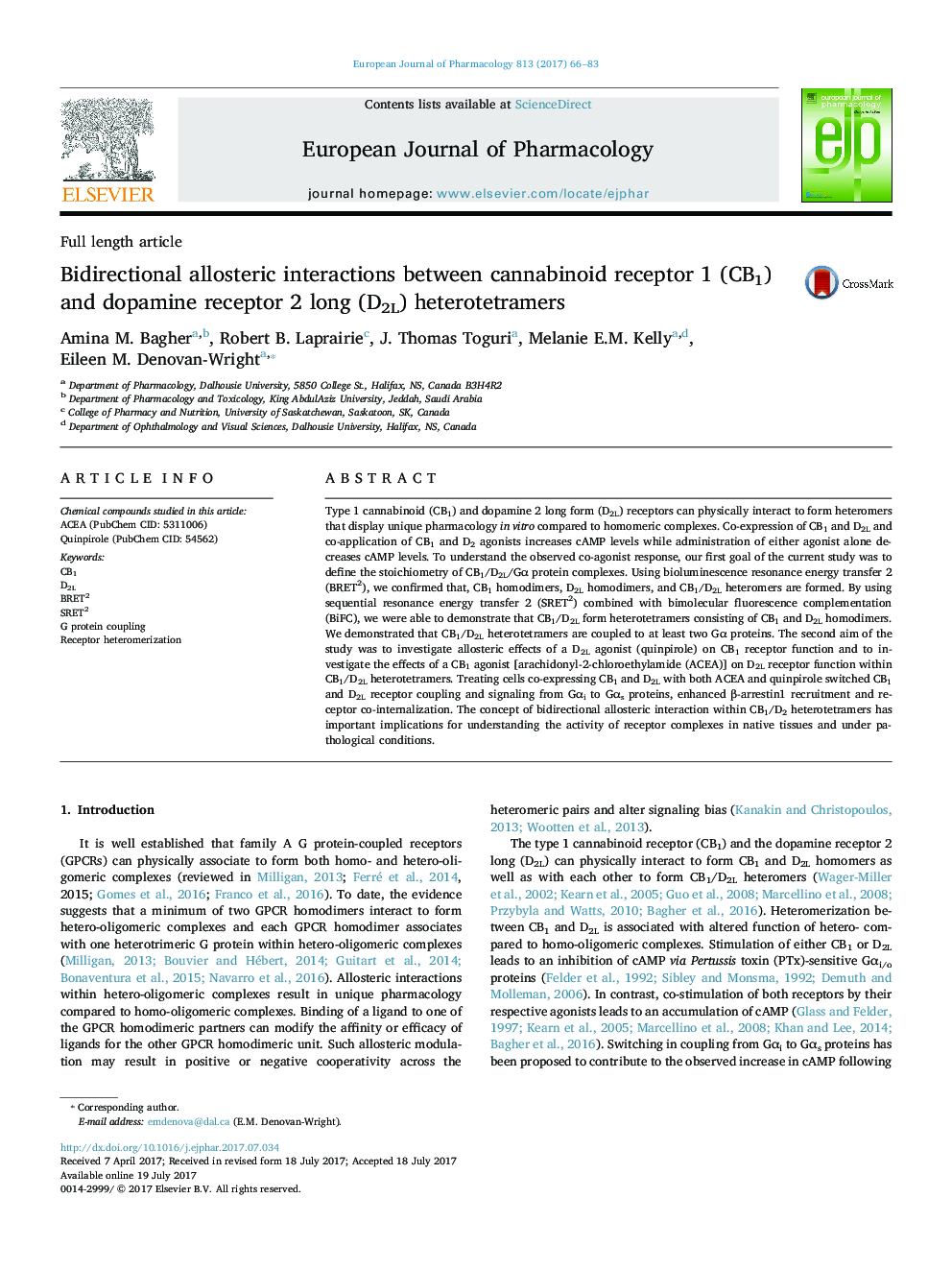| Article ID | Journal | Published Year | Pages | File Type |
|---|---|---|---|---|
| 5554381 | European Journal of Pharmacology | 2017 | 18 Pages |
Type 1 cannabinoid (CB1) and dopamine 2 long form (D2L) receptors can physically interact to form heteromers that display unique pharmacology in vitro compared to homomeric complexes. Co-expression of CB1 and D2L and co-application of CB1 and D2 agonists increases cAMP levels while administration of either agonist alone decreases cAMP levels. To understand the observed co-agonist response, our first goal of the current study was to define the stoichiometry of CB1/D2L/Gα protein complexes. Using bioluminescence resonance energy transfer 2 (BRET2), we confirmed that, CB1 homodimers, D2L homodimers, and CB1/D2L heteromers are formed. By using sequential resonance energy transfer 2 (SRET2) combined with bimolecular fluorescence complementation (BiFC), we were able to demonstrate that CB1/D2L form heterotetramers consisting of CB1 and D2L homodimers. We demonstrated that CB1/D2L heterotetramers are coupled to at least two Gα proteins. The second aim of the study was to investigate allosteric effects of a D2L agonist (quinpirole) on CB1 receptor function and to investigate the effects of a CB1 agonist [arachidonyl-2-chloroethylamide (ACEA)] on D2L receptor function within CB1/D2L heterotetramers. Treating cells co-expressing CB1 and D2L with both ACEA and quinpirole switched CB1 and D2L receptor coupling and signaling from Gαi to Gαs proteins, enhanced β-arrestin1 recruitment and receptor co-internalization. The concept of bidirectional allosteric interaction within CB1/D2 heterotetramers has important implications for understanding the activity of receptor complexes in native tissues and under pathological conditions.
Graphical abstractDownload high-res image (209KB)Download full-size image
